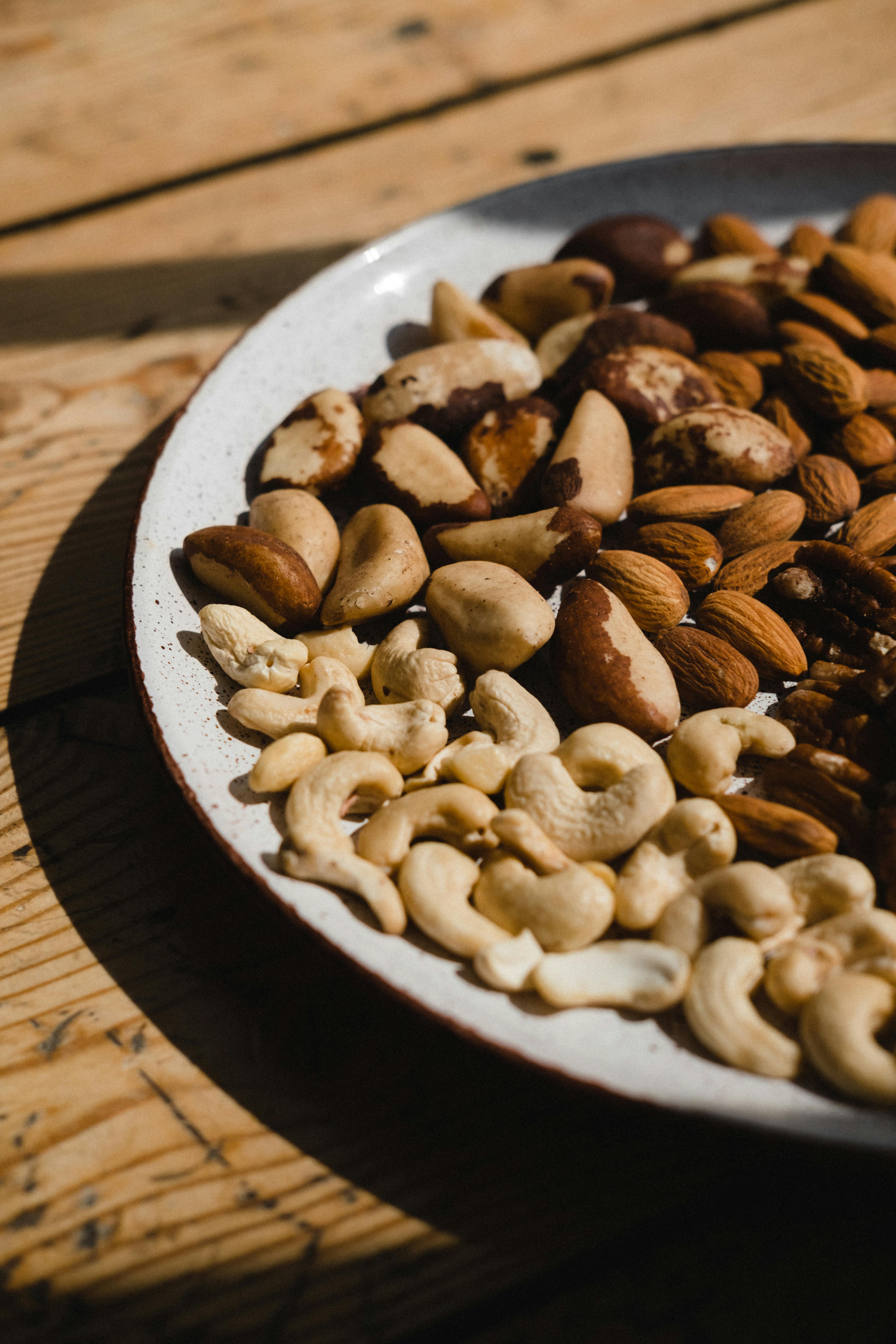Tastepan’s “Balanced Meals: A Guide to Nutritional Proportions” is your ultimate resource for prioritizing your well-being. With a collection of nutritious and delicious recipes, Tastepan makes healthy eating both easy and flavorful. Discover wholesome meal ideas, dietary tips, and expert advice to nourish your body without sacrificing taste. Say goodbye to the dilemma of choosing between health and flavor, and say hello to a balanced and satisfying diet.

Importance of Balanced Meals
Benefits of balanced meals
Eating balanced meals is essential for maintaining overall health and well-being. A balanced meal consists of all the necessary nutrients in the right proportions, including macronutrients and micronutrients. By consuming a variety of foods from different food groups, you provide your body with the fuel it needs to function optimally. Here are some key benefits of incorporating balanced meals into your diet:
-
Sustained Energy Levels: A balanced combination of carbohydrates, proteins, and healthy fats ensures a steady release of energy throughout the day. This helps you stay alert and focused, preventing energy crashes and fatigue.
-
Improved Digestion: Including an adequate amount of fiber from fruits, vegetables, and whole grains in your balanced meals promotes healthy digestion. It prevents constipation, aids in maintaining a healthy weight, and reduces the risk of developing digestive issues such as irritable bowel syndrome.
-
Enhanced Nutrient Absorption: Consuming a diverse range of foods in your balanced meals ensures that you receive a wide array of vitamins, minerals, and antioxidants. These nutrients play crucial roles in supporting various bodily functions, boosting immunity, and protecting against diseases.
-
Weight Management: Balanced meals help you maintain a healthy weight by providing the body with the right nutrients and preventing overeating. Including adequate protein, fiber, and healthy fats in your meals can promote feelings of fullness and reduce cravings for unhealthy snacks.
-
Improved Cognitive Function: The brain requires a constant supply of nutrients to function optimally. By including foods rich in omega-3 fatty acids, antioxidants, and B-vitamins, you can support brain health, enhance memory, and improve concentration.
Role of balanced meals in overall health
Balanced meals play a vital role in maintaining overall health. They supply the body with the necessary nutrients to support various bodily functions and prevent nutrient deficiencies. Here are some ways balanced meals contribute to overall well-being:
-
Heart Health: Including a variety of vegetables, fruits, lean proteins, and healthy fats in balanced meals can help reduce the risk of cardiovascular diseases. These foods are rich in antioxidants, fiber, and heart-healthy nutrients, such as omega-3 fatty acids.
-
Bone Health: Balanced meals provide essential nutrients like calcium, vitamin D, and magnesium, which are crucial for maintaining strong and healthy bones. Consuming dairy products, leafy greens, and fortified foods can contribute to optimal bone health and reduce the risk of osteoporosis.
-
Improved Immunity: A well-balanced meal plan supports a strong immune system. Nutrients such as vitamins A, C, E, zinc, and selenium found in vegetables, fruits, lean proteins, and whole grains help to boost immune function and reduce the risk of infections and illnesses.
-
Disease Prevention: By including a variety of colorful fruits and vegetables in your meals, you can benefit from the numerous phytochemicals and antioxidants that protect against chronic diseases such as cancer, diabetes, and heart disease.
-
Mental Well-being: Balanced meals can have a positive impact on mental health. Omega-3 fatty acids from fish, whole grains, and leafy greens can reduce the risk of depression and improve overall mood and well-being.
Macronutrients
What are macronutrients
Macronutrients are nutrients that the body requires in large amounts for proper functioning. The three primary macronutrients are carbohydrates, proteins, and fats. Each macronutrient plays a unique role in the body’s daily functions. Here’s a breakdown of each macronutrient and their functions:
-
Carbohydrates: Carbohydrates are the body’s primary source of energy. They provide fuel for the brain, muscles, and other organs. Carbohydrates can be found in foods such as grains, legumes, fruits, and vegetables.
-
Proteins: Proteins are essential for cell growth, repair, and maintenance. They are involved in building and repairing tissues, producing enzymes and hormones, and supporting the immune system. Good sources of protein include lean meats, poultry, fish, dairy products, legumes, and tofu.
-
Fats: Fats are an essential macronutrient that provides energy, helps absorb fat-soluble vitamins, and protects vital organs. Healthy fats, such as monounsaturated and polyunsaturated fats, can be found in foods like avocados, nuts, seeds, and fatty fish.
Proper proportions of macronutrients in a balanced meal
To create a balanced meal, it’s important to include all three macronutrients in the right proportions. The ideal macronutrient ratio may vary depending on factors such as age, sex, activity level, and specific dietary goals. However, a general guideline for a balanced meal is to aim for the following proportions:
-
Carbohydrates: Approximately 45-65% of your total daily calorie intake should come from carbohydrates. These can be obtained from whole grains, fruits, and starchy vegetables such as sweet potatoes.
-
Proteins: Aim for about 10-35% of your total daily calories to come from protein sources. This can be achieved by incorporating lean meats, poultry, fish, dairy products, legumes, and plant-based protein sources into your meals.
-
Fats: Approximately 20-35% of your total daily calorie intake should come from healthy fats. Include sources such as avocados, nuts, seeds, olive oil, and fatty fish like salmon.
It’s important to note that the quality of macronutrients is crucial. Choose whole food sources that are nutrient-dense and limit added sugars, unhealthy fats, and refined carbohydrates.

Micronutrients
What are micronutrients
Micronutrients, often referred to as vitamins and minerals, are essential nutrients required in smaller amounts for proper bodily functions. Although micronutrients are needed in smaller quantities compared to macronutrients, they are equally important. Here’s an overview of some important micronutrients and their functions:
-
Vitamin A: Essential for vision, immune function, and cell growth. Good sources include carrots, sweet potatoes, spinach, and liver.
-
Vitamin C: Important for collagen synthesis, immune support, and antioxidant protection. Found in citrus fruits, berries, bell peppers, and leafy greens.
-
Vitamin D: Crucial for bone health as it aids in calcium absorption. Sun exposure, fatty fish, fortified dairy products, and egg yolks are good sources.
-
Iron: Required for oxygen transport in the body and preventing iron-deficiency anemia. Sources include lean meats, poultry, seafood, legumes, and dark leafy greens.
-
Calcium: Vital for bone health and muscle function. Dairy products, fortified plant-based milk, leafy greens, and tofu are good sources.
-
Zinc: Important for immune function, wound healing, and DNA synthesis. Found in meat, shellfish, legumes, nuts, and seeds.
-
Magnesium: Involved in over 300 biochemical reactions in the body, including energy production and muscle function. Good sources include nuts, seeds, whole grains, and leafy greens.
It’s crucial to consume a variety of nutrient-dense foods to ensure an adequate intake of micronutrients. Eating a wide range of colorful fruits, vegetables, whole grains, lean proteins, and dairy products can help meet your micronutrient needs.
Vegetables and Fruits
Including a variety of vegetables and fruits
Including a variety of vegetables and fruits in your balanced meals is crucial for obtaining essential vitamins, minerals, and antioxidants. Different fruits and vegetables offer a diverse range of nutrients, flavors, and textures. Here’s why it’s important to include a variety of these plant-based foods in your diet:
-
Vitamins and Minerals: Vegetables and fruits are packed with essential vitamins and minerals that support overall health. Each fruit and vegetable contains a unique combination of nutrients, so by consuming a variety, you can ensure you’re getting a broad spectrum of necessary micronutrients.
-
Fiber Content: Fruits and vegetables are excellent sources of dietary fiber. Including fiber-rich foods in your meals promotes healthy digestion, prevents constipation, and helps maintain a healthy weight. High-fiber foods also provide a feeling of fullness, which can aid in portion control and prevent overeating.
-
Antioxidant Protection: Many fruits and vegetables are rich in antioxidants, which help protect the body’s cells from damage caused by harmful free radicals. Antioxidants have been linked to a reduced risk of chronic diseases such as heart disease, cancer, and neurological disorders.
-
Hydration: Certain fruits and vegetables have high water content, which can contribute to hydration. Consuming these hydrating foods, such as cucumbers, watermelon, and citrus fruits, can help maintain proper hydration levels, especially during warmer months.
To include a variety of vegetables and fruits in your meals, aim for a rainbow of colors on your plate. Include dark leafy greens, vibrant red and orange fruits and vegetables, purple produce, and cruciferous vegetables like broccoli and cauliflower. Don’t be afraid to try new varieties and experiment with different cooking methods to keep your meals exciting and flavorful.
Benefits of consuming vegetables and fruits in the right proportions
Consuming vegetables and fruits in the right proportions offers several benefits for your overall health and well-being. Here are some key advantages:
-
Nutrient Density: Vegetables and fruits are low in calories but high in essential vitamins, minerals, and antioxidants. By including these foods in your balanced meals, you can increase your nutrient intake without significantly adding to your caloric intake.
-
Weight Management: Vegetables and fruits are rich in fiber and water, which can promote feelings of fullness and reduce overall calorie consumption. Including a variety of vegetables and fruits in your meals can help control portion sizes and prevent overeating, ultimately supporting weight management efforts.
-
Digestive Health: The fiber content in vegetables and fruits promotes healthy digestion by adding bulk to the stool and preventing constipation. Fiber also acts as a prebiotic, supporting the growth of beneficial gut bacteria, which contributes to a healthy digestive system.
-
Disease Prevention: Antioxidants, phytochemicals, and other bioactive compounds found in vegetables and fruits have been linked to a reduced risk of chronic diseases. Regular consumption of these foods can help protect against heart disease, certain cancers, and age-related macular degeneration.
-
Skin Health: The vitamins and antioxidants in vegetables and fruits can improve skin health and appearance. These nutrients help protect against sun damage, promote collagen production, and provide hydration to the skin, resulting in a radiant complexion.
Remember to consume a variety of vegetables and fruits in their whole, unprocessed forms to maximize their nutritional benefits. Aim for at least five servings per day, including a mix of different colors and types to ensure a wide range of nutrients.

Protein Sources
Different types of protein sources
Including various protein sources in your balanced meals is important for meeting your body’s protein needs. Protein is composed of amino acids, which are essential for muscle building, tissue repair, enzyme production, and hormone synthesis. Here are different types of protein sources:
-
Animal-Based Proteins: Animal-based protein sources include lean meats, poultry, fish, eggs, and dairy products. These sources provide complete proteins, meaning they contain all the essential amino acids required by the body.
-
Plant-Based Proteins: Plant-based protein sources include legumes (such as lentils, chickpeas, and beans), tofu, tempeh, seitan, edamame, and certain grains (such as quinoa and amaranth). These sources may not provide all essential amino acids individually but can be combined to form complete proteins.
-
Dairy and Dairy Alternatives: Dairy products, such as milk, cheese, and yogurt, are excellent sources of high-quality protein. For those following a vegan or lactose-free diet, there are a variety of dairy alternatives available, including almond milk, soy milk, and pea protein-based products.
-
Nuts, Seeds, and Nut Butters: Nuts and seeds, including almonds, walnuts, chia seeds, and sunflower seeds, contain protein along with healthy fats. Nut butters made from these sources, such as almond butter or peanut butter, can also be included as protein-rich additions to meals or snacks.
-
Quinoa: Quinoa is a plant-based pseudo-grain that provides all essential amino acids, making it a valuable complete protein source for vegetarians and vegans.
Including a combination of protein sources in your meals ensures a diverse intake of amino acids and a well-rounded nutrient profile. Incorporate both animal-based and plant-based proteins into your diet to meet your individual dietary preferences and needs.
Recommended amount of protein in a balanced meal
The recommended amount of protein in a balanced meal depends on individual factors such as age, sex, weight, activity level, and overall health goals. However, a general guideline for protein intake is to consume around 0.8-1 gram of protein per kilogram of body weight per day. Here’s how you can distribute your protein intake across meals:
-
Breakfast: Including a source of protein in your breakfast can help provide sustained energy and prevent mid-morning snack cravings. For example, you can opt for Greek yogurt, eggs, or a smoothie with added protein powder.
-
Lunch and Dinner: Make sure to include a protein source in both your main meals. Lean meats, fish, poultry, tofu, legumes, and dairy products can all be excellent options. Aim to have a palm-sized portion of protein in each meal.
-
Snacks: Including protein-rich snacks can help you maintain satiety and provide lasting energy between meals. Options like a handful of nuts, Greek yogurt, hummus with vegetables, or a protein bar can be convenient and nutritious choices.
Remember to take individual dietary needs, preferences, and any specific requirements, such as those of vegetarian or vegan diets, into account when determining your protein intake. Consulting with a registered dietitian can provide personalized guidance on your protein needs based on your specific goals and lifestyle.
Healthy Fats
Choosing healthy fats in your diet
Including healthy fats in your balanced meals is essential for overall health. Fat is a vital macronutrient that provides energy, aids in nutrient absorption, and supports various bodily functions. However, not all fats are created equal. Here’s a guide on choosing healthy fats for your diet:
-
Monounsaturated Fats: These fats are known for their heart-healthy benefits. Include foods like avocados, olive oil, nuts, and seeds in your meals to incorporate monounsaturated fats. They can help reduce bad cholesterol levels and lower the risk of heart disease.
-
Polyunsaturated Fats: Polyunsaturated fats are essential fats that the body needs but cannot produce on its own. They are rich in omega-3 and omega-6 fatty acids. Sources of polyunsaturated fats include fatty fish (such as salmon, mackerel, and trout), walnuts, flaxseeds, chia seeds, and sunflower seeds.
-
Omega-3 Fatty Acids: Omega-3 fatty acids are a type of polyunsaturated fat that provide numerous health benefits. They support heart health, brain function, and reduce inflammation in the body. Fatty fish, chia seeds, flaxseeds, and walnuts are excellent sources of omega-3 fatty acids.
-
Saturated Fats: Saturated fats, found mainly in animal products and some tropical oils such as coconut oil and palm oil, should be consumed in moderation. While they are not inherently bad, excessive intake of saturated fats can raise bad cholesterol levels and increase the risk of heart disease.
-
Trans Fats: Trans fats are artificial fats that are created through a process called hydrogenation. They are commonly found in processed snacks, fried foods, and baked goods. Trans fats raise bad cholesterol levels and increase the risk of heart disease, so it’s best to avoid them as much as possible.
When cooking, opt for cooking oils such as olive oil or avocado oil. Limit your intake of processed and fried foods, opting for homemade meals prepared with healthier fats. It’s also important to note that while healthy fats offer numerous benefits, they are calorie-dense. Therefore, it’s still important to consume them in moderation and consider portion sizes to maintain a balanced diet.
Proper portion sizes for healthy fats
Proper portion control is important when incorporating healthy fats into your balanced meals. Even though healthy fats offer various health benefits, they are still high in calories. Here are some guidelines on portion sizes for healthy fats:
-
Avocado: A quarter to a half of a medium-sized avocado is a good portion size. Use avocado as a spread, add it to salads or smoothies, or enjoy it as a filling in sandwiches or wraps.
-
Nuts and Seeds: A small handful or about 1-2 tablespoons of nuts or seeds is a reasonable portion size. Avoid consuming large quantities in one sitting to prevent excessive calorie intake.
-
Olive Oil: Use 1 tablespoon of olive oil when cooking or drizzling over salads and vegetables. Be mindful of using excessive amounts, as the calories can add up quickly.
-
Nut Butter: Stick to 1-2 tablespoons of nut butter (such as almond butter or peanut butter) per serving. Enjoy it on whole grain toast, in smoothies, or as a dip for fruits and vegetables.
-
Fatty Fish: A portion size of fatty fish, such as salmon or trout, is around 3-4 ounces. Aim to include fatty fish in your meals 2-3 times per week to benefit from their omega-3 fatty acid content.
Remember that proper portion sizes can vary depending on individual nutritional needs, goals, and overall calorie requirements. Seek guidance from a registered dietitian to determine the appropriate portion sizes of healthy fats that align with your specific dietary goals.

Carbohydrates
Understanding different types of carbohydrates
Carbohydrates are an essential macronutrient and a crucial source of energy for the body. However, not all carbohydrates are created equal. There are two main types of carbohydrates: simple carbohydrates and complex carbohydrates. Understanding the differences between these types can help you make informed decisions about your carbohydrate intake.
-
Simple Carbohydrates: Simple carbohydrates, also known as “simple sugars,” consist of one or two sugar molecules linked together. They are quickly digested and absorbed by the body, resulting in a rapid rise in blood sugar levels. Foods high in simple carbohydrates include table sugar, honey, maple syrup, candy, soda, and processed snacks.
-
Complex Carbohydrates: Complex carbohydrates are composed of long chains of sugar molecules and generally take longer to digest. They provide a more sustained release of energy and can be found in foods such as whole grains, legumes, fruits, and vegetables.
Proper intake of carbohydrates for balanced meals
Carbohydrates should be part of a balanced meal plan as they provide energy and essential nutrients like fiber, vitamins, and minerals. However, the type and quantity of carbohydrates can vary depending on individual needs and goals. Here’s a guideline for the proper intake of carbohydrates in a balanced diet:
-
Choose Complex Carbohydrates: Focus on consuming complex carbohydrates, such as whole grains, legumes, fruits, and vegetables. These foods provide more fiber, vitamins, and minerals compared to simple carbohydrates.
-
Fiber-Rich Foods: Include high-fiber foods in your meals to promote healthy digestion and reduce the risk of chronic diseases. Whole grains, vegetables, and legumes are excellent sources of dietary fiber.
-
Control Portion Sizes: Be mindful of portion sizes, especially when it comes to foods higher in carbohydrates. Measure portions of grains, such as rice and pasta, to ensure you’re not consuming excessive amounts in one serving.
-
Glycemic Index: Consider the glycemic index (GI) of carbohydrate-rich foods. The GI is a measure of how quickly a food raises blood sugar levels. Generally, lower GI foods, such as whole grains, legumes, and most vegetables, are recommended for balanced meals as they have a slower and more sustained impact on blood sugar levels.
-
Individual Needs: The appropriate amount of carbohydrates can vary depending on factors such as activity level, age, and overall health goals. Consulting with a registered dietitian can provide personalized guidance on your carbohydrate intake based on your specific needs.
Balancing your carbohydrate intake with other macronutrients and choosing nutrient-dense, whole food sources is essential for a well-rounded and healthy diet.
Fiber and Whole Grains
Importance of fiber in balanced meals
Fiber is a type of carbohydrate that the body cannot digest. However, it plays a crucial role in maintaining overall health. Including an adequate amount of fiber in your balanced meals offers several benefits:
-
Digestive Health: Fiber promotes regular bowel movements, prevents constipation, and supports a healthy digestive system. It adds bulk to the stool, making it easier to pass through the intestines.
-
Blood Sugar Management: Consuming fiber-rich foods can help regulate blood sugar levels. Fiber slows down the absorption of glucose, preventing sharp spikes in blood sugar after a meal.
-
Weight Management: High-fiber foods tend to be more filling, which can help control appetite and contribute to weight management. Incorporating fiber-rich foods can help you feel satisfied for longer, reducing the likelihood of overeating.
-
Heart Health: Certain types of fiber, such as soluble fiber, can help lower cholesterol levels. By incorporating fiber-rich foods like oats, legumes, and fruits into your meals, you can promote heart health and reduce the risk of cardiovascular diseases.
-
Colon Health: Fiber assists in maintaining a healthy colon by preventing the buildup of waste and reducing the risk of conditions such as diverticulitis and colorectal cancer.
Including whole grains for added fiber
Whole grains are an excellent source of dietary fiber and offer a wide array of health benefits. Unlike refined grains, whole grains contain the entire grain, including the bran, germ, and endosperm, ensuring a higher fiber content and a richer nutrient profile. Here’s why it’s important to include whole grains in your balanced meals:
-
Fiber Content: Whole grains are rich in dietary fiber, which aids in digestion, supports regular bowel movements, and helps control blood sugar levels. Their high fiber content can contribute significantly to your daily fiber intake.
-
Nutrient Density: Whole grains provide essential vitamins, minerals, and antioxidants that are stripped away during the refining process. These nutrients support overall health, including heart health, brain function, and immune function.
-
Sustained Energy: Whole grains release energy slowly, providing a steady supply of fuel to the body. This can help sustain energy levels throughout the day and prevent blood sugar crashes.
-
Weight Management: The fiber in whole grains adds bulk to the diet, promoting feelings of fullness and reducing the likelihood of overeating. Including whole grains in your meals can contribute to weight management efforts.
To incorporate more whole grains into your balanced meals, opt for options such as whole wheat bread, whole grain pasta, brown rice, quinoa, oats, and barley. When shopping for grain products, look for the term “whole” as the first ingredient on the food label. This indicates that the product contains the full grain and retains its fiber and nutrient content.

Portion Control
Proper portion sizes for each food group
Maintaining proper portion sizes is crucial for a well-balanced meal. Even nutrient-dense foods can contribute to weight gain if consumed in excessive amounts. Here are general guidelines for portion sizes across different food groups in a balanced meal:
-
Proteins: Aim for a palm-sized portion (about 3-4 ounces) of lean meats, fish, or poultry. For plant-based protein sources, such as legumes or tofu, a cup-sized portion is appropriate.
-
Vegetables: Include a variety of vegetables in your meals, aiming for at least half of your plate to be filled with them. Fill one-fourth to one-half of your plate with vegetables, depending on the specific recommendations for your calorie needs.
-
Fruits: Include a serving of fruit in your meals or as a snack, aiming for about a half-cup portion. Fresh fruits, frozen fruits, or canned fruits in their own juice (without added sugars) are all good options.
-
Grains: Portion sizes for grains can vary depending on the specific type and calorie needs. Aim for about a half-cup to one cup of cooked grains, such as rice or quinoa. For bread and pasta, a serving is typically one slice or about half a cup, respectively.
-
Fats: Fats, including oils, butter, and spreads, should be consumed in moderation due to their high calorie content. Limit oils to around 1-2 tablespoons per meal, and spreads should be used sparingly.
Remember that these are general guidelines, and individual portion sizes may vary depending on factors such as age, sex, activity level, and overall calorie requirements. Moderation and listening to your body’s hunger and fullness cues are key when it comes to portion control.
Tips for controlling portion sizes
Controlling portion sizes can be challenging, especially in a world of oversized servings and convenience foods. However, practicing portion control is essential for maintaining a well-balanced diet. Here are some tips to help you control portion sizes:
-
Use Smaller Plates and Bowls: Serve your meals on smaller plates and bowls to visually create the perception of a fuller plate. This can help you feel satisfied with smaller portions.
-
Measure Your Food: Utilize measuring cups, spoons, and kitchen scales to accurately measure your food portions. This is particularly helpful when it comes to calorie-dense foods such as grains, fats, and proteins.
-
Fill Half Your Plate with Vegetables: Visualize dividing your plate in half and fill one side with vegetables. This naturally reduces the space available for larger portions of other foods, helping control overall calorie intake.
-
Be Mindful of Liquid Calories: Be aware of the calorie content in beverages such as juices, sodas, and alcoholic drinks. These can significantly contribute to overall calorie intake. Opt for water, unsweetened tea, or flavored water alternatives to quench your thirst without adding unnecessary calories.
-
Practice Mindful Eating: Slow down and pay attention to your body’s hunger and fullness cues. Eating slowly and savoring each bite can help prevent overeating and promote better digestion.
-
Keep Snacks and Treats in Smaller Containers: When enjoying snacks or treats, portion them into smaller containers or bags instead of eating directly from the original package. This can help prevent mindless snacking or eating larger portions.
By incorporating these portion control strategies into your daily routine, you can maintain a balanced diet, support weight management goals, and ensure you’re meeting your nutritional needs.
Meal Planning and Meal Prep
The importance of meal planning
Meal planning is a valuable tool for creating balanced meals, supporting healthy eating habits, and avoiding last-minute unhealthy food choices. Here’s why meal planning is important:
-
Nutritional Proportions: Meal planning allows you to ensure that each meal includes adequate amounts of macronutrients and micronutrients. By considering the different food groups and nutritional needs when planning your meals, you can create a well-rounded and balanced diet.
-
Time Efficiency: Planning your meals in advance can save time during busy days. By having a concrete plan, you can shop for groceries more efficiently, prepare ingredients in advance, and reduce the time spent on deciding what to cook each day.
-
Budget-Friendly: Meal planning can help you make cost-effective choices by creating a shopping list based on the ingredients you need for your planned meals. You can also reduce food waste by properly utilizing ingredients and leftovers.
-
Healthier Choices: Planning meals in advance can help you make healthier choices and avoid relying on fast food or unhealthy processed options. By having nutritious meals readily available, you’re more likely to stick to your dietary goals and make better food choices.
Tips for meal prepping for balanced meals
Meal prepping is a practical way to ensure you have balanced meals readily available throughout the week. Here are some tips to help you get started with meal prepping:
-
Plan Your Meals: Start by planning your meals for the upcoming week. Consider the macronutrient and micronutrient balance, diversity of ingredients, and any dietary preferences or restrictions.
-
Make a Shopping List: Based on your meal plan, create a shopping list of the ingredients you’ll need. Stick to your list while grocery shopping to avoid impulse purchases and ensure you have everything you need for your meals.
-
Batch Cooking: Dedicate a specific time, such as weekends, for batch cooking. Prepare larger portions of meals and divide them into individual containers for grab-and-go convenience throughout the week.
-
Portion Control: When portioning your prepped meals, be mindful of serving sizes and balance the macronutrients appropriately. Use sectioned containers or small containers for various components of the meals to maintain portion control.
-
Storage and Labeling: Store your prepped meals in suitable containers and label them with the date to ensure freshness. Properly store them in the refrigerator or freezer, depending on the shelf life of the ingredients.
-
Variety and Flexibility: Incorporate a variety of recipes and ingredients into your meal prep to avoid monotony and increase nutrient intake. Consider prepping components that can be mixed and matched to create different meals throughout the week.
-
Snacks and Smoothies: Prepare grab-and-go snacks, such as cut fruits, pre-portioned nuts, or homemade energy bars, to have healthy options readily available. You can also pre-measure smoothie ingredients and freeze them for quick and nutritious breakfasts or snacks.
By implementing meal planning and prepping into your routine, you can save time, reduce stress, and ensure that you have balanced meals readily available for a healthier and more organized lifestyle.
In conclusion, incorporating balanced meals into your diet is essential for overall health and well-being. By including a variety of macronutrients and micronutrients, such as proteins, healthy fats, carbohydrates, vegetables, fruits, fiber, and whole grains, you can provide your body with the necessary nutrients for optimal functioning. Portion control, meal planning, and meal prepping are valuable strategies to maintain a well-balanced diet and support your health goals. Prioritizing balanced meals allows you to fuel your body effectively while enjoying the benefits of improved energy levels, digestion, weight management, and overall long-term health. So, make the commitment to prioritize your well-being by incorporating balanced meals into your daily routine and nourishing your body without sacrificing flavor.

